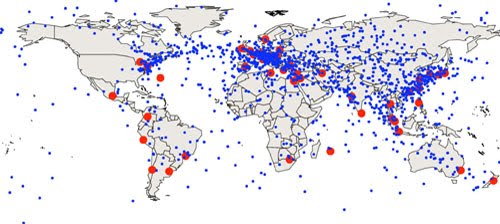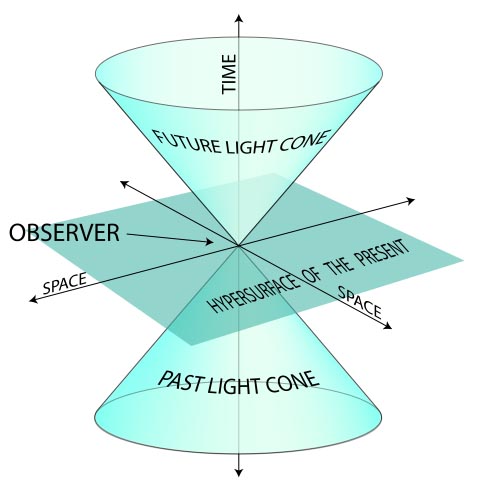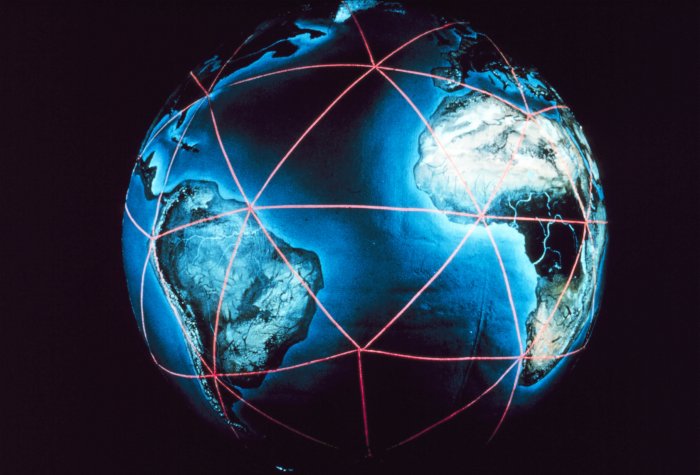 [Image: “CHRONOS: The Space-Time Planetarium,” proposed by Drew Heller, Isabella Marcotulli, and Ibrahim Salman, via Eleven Magazine].
[Image: “CHRONOS: The Space-Time Planetarium,” proposed by Drew Heller, Isabella Marcotulli, and Ibrahim Salman, via Eleven Magazine].
With news of “the largest planetarium in the Western Hemisphere and the fourth largest in the world” opening in New Jersey, I’m reminded of a design competition I meant to post about earlier this year.
A few months ago, Eleven Magazine hosted a quick competition to rethink the planetarium. It’s a great design brief: Eleven’s editors asked “if architecture itself could become—once again—a tool for experiencing and understanding space. How can architecture engage with and enhance today’s renewed age of space exploration and discovery? What does the next generation of planetariums look like?”
You can click around on the various entries here, but a few seemed worth mentioning.
 [Image: “Microsphere” planetarium proposal by Christian Gabbiani and Elisa Porro, via Eleven Magazine].
[Image: “Microsphere” planetarium proposal by Christian Gabbiani and Elisa Porro, via Eleven Magazine].
The “Microsphere” proposal, for example, entails “a network of little planetariums scattered all over the world.” As the title suggests, each planetarium would be a small, single-occupancy sphere acting as a meditative space for viewing, studying, or thinking about the cosmos.
It’s an idea that only suffers from the unnecessary stipulation that these should be built directly next to existing, often very ancient sites of star observation, including Stonehenge. Not only does Stonehenge not need this sort of thing parked next to it, but installing these out in the suburbs, on city streets, on the roofs of low-income housing units, or even hidden in thickets in state parks would seem to be a much more interesting way for these structures to bring astronomy to the masses.
 [Image: “Microsphere” planetarium proposal by Christian Gabbiani and Elisa Porro, via Eleven Magazine].
[Image: “Microsphere” planetarium proposal by Christian Gabbiani and Elisa Porro, via Eleven Magazine].
Another project is interesting for its attempt to reconceive what “space” really is and how a planetarium is meant to represent or engage with it.
 [Image: “CHRONOS: The Space-Time Planetarium,” proposed by Drew Heller, Isabella Marcotulli, and Ibrahim Salman, via Eleven Magazine].
[Image: “CHRONOS: The Space-Time Planetarium,” proposed by Drew Heller, Isabella Marcotulli, and Ibrahim Salman, via Eleven Magazine].
Acting as a “space-time planetarium,” a project called CHRONOS would allow visitors to “perceive astronomical scenes at different rates… through a labyrinth of six architectural techniques that invite the user to abandon earthly notions of space and time.”
The building thus requires a “space-time diagram.”
 [Image: “Microsphere” planetarium proposal by Christian Gabbiani and Elisa Porro, via Eleven Magazine].
[Image: “Microsphere” planetarium proposal by Christian Gabbiani and Elisa Porro, via Eleven Magazine].
Whether or not the resulting building would actually resemble what the designers have proposed here, it sounds awesome. “The planetarium grounds users through abstract learning as they navigate the entanglement while warping their perception of space-time,” they write. “While traveling through a series of architectural space-time scenarios, users are enlightened with astronomical scenes that transcend human perception.”
 [Image: “Microsphere” planetarium proposal by Christian Gabbiani and Elisa Porro, via Eleven Magazine].
[Image: “Microsphere” planetarium proposal by Christian Gabbiani and Elisa Porro, via Eleven Magazine].
As you’d expect, not every entry is particularly interesting and there are some real doozies in there, but it’s worth checking out. While you’re there, though, check out the other competitions—some still ongoing—that Eleven has hosted.
 [Image: One of the pots; photo by
[Image: One of the pots; photo by  [Image: One of the pots; photo by
[Image: One of the pots; photo by  [Image: The London “time ball” at Greenwich, courtesy
[Image: The London “time ball” at Greenwich, courtesy  [Image: Historic shot of the time ball, via the
[Image: Historic shot of the time ball, via the 
 [Image: Global map of “optimal intermediate locations between trading centers,” based on the earth’s geometry and the speed of light, by
[Image: Global map of “optimal intermediate locations between trading centers,” based on the earth’s geometry and the speed of light, by  [Image: Diagrammatic explanation of a “light cone,” courtesy of
[Image: Diagrammatic explanation of a “light cone,” courtesy of  [Image: An otherwise unrelated image from NOAA featuring a geodetic
[Image: An otherwise unrelated image from NOAA featuring a geodetic